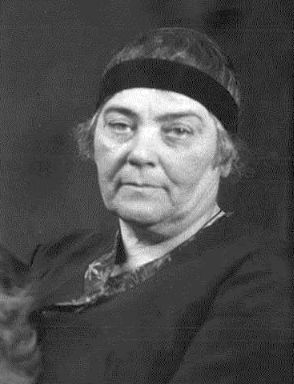The House of All Sorts
Book Details
| Title: | The House of All Sorts | ||||||||||
| Author: |
| ||||||||||
| Published: | 1944 | ||||||||||
| Publisher: | Clarke, Irwin & Company Limited | ||||||||||
| Tags: | autobiography, Canada, Canadiana, non-fiction, dogs | ||||||||||
| Description: | The House of All Sorts is the story of Emily Carr’s experiences as a landlady in her native city of Victoria. When, in 1913, Miss Carr gave up teaching art, she built an apartment house on property that had belonged to her father. She hoped that she would be able to realize enough from rents to support her so that she could devote herself to her painting. Unfortunately, the advent of war and a consequent slump in real estate returns made it necessary for the artist to spend much of her time caretaking and catering to the whims of her tenants. Never one to suffer fools gladly, she was bitterly unhappy during this period of more than twenty years. Moreover, she was forced to supplement her rental income by making pottery, hooking rugs, and raising sheep-dogs, which left her very little time for the painting that was the essence of her being. Only her animals and the pleasure of an occasional sketching trip to the woods alleviated her misery. [Suggest a different description.] |
||||||||||
| Downloads: | 199 | ||||||||||
| Pages: | 148  |
Author Bio for Carr, Emily

Emily Carr (1871-1945)
Emily Carr was a Canadian artist and writer who was inspired by the Indigenous peoples of the Pacific Northwest Coast. One of the first painters in Canada to adopt a Modernist and Post-Impressionist painting style, Carr did not receive widespread recognition for her work until the subject matter of her painting shifted from Aboriginal themes to landscapes—forest scenes in particular of British Columbia. As a writer, Carr was one of the earliest chroniclers of life in British Columbia.
In 1898, at age 27, Carr made the first of several sketching and painting trips to Aboriginal villages. She stayed in a village near Ucluelet on the west coast of Vancouver Island, home to the Nuu-chah-nulth people, then known to English-speaking people as ‘Nootka’. In 1912, Carr took a sketching trip to First Nations’ villages in Haida Gwaii, the Upper Skeena River, and Alert Bay. Even though Carr left the villages of the Pacific Northwest, the impact of the people stayed with her and she adopted the Indian name Klee Wyck. Carr continued to travel throughout the late 1920s and 1930s away from Victoria. Her last trip north was in the summer of 1928, when she visited the Nass and Skeena rivers, as well Haida Gwaii, formerly known as the Queen Charlotte Islands. She also travelled to Friendly Cove and the northeast coast of Vancouver Island, and then up to Lillooet in 1933.
Recognition of her work grew steadily. It was at the exhibition on West Coast Aboriginal art at the National Gallery in 1927 that Carr first met members of the Group of Seven, at that time Canada’s most recognized modern painters, who welcomed her into their ranks of Canada’s leading modernists. The encounter ended the artistic isolation of Carr’s previous 15 years, leading to one of her most prolific periods, and the creation of many of her most notable works.
In 1937, Carr suffered her first heart attack, which marked the beginning of a decline in her health and a lessening of the energy required for painting. She began to devote more time to writing. Her first book, Klee Wyck, a collection of short stories based on her experiences with Aboriginal people, was published in 1941, a year that also effectively marked the end of her painting career. The book won a Governor General’s Award and was followed by the publication of four other books, two of them posthumously.
Sources: Canadian Encyclopedia, Wikipedia
Available Formats
| FILE TYPE | LINK | ||
| UTF-8 text | 20210547.txt | ||
| HTML | 20210547.html | ||
| Epub | 20210547.epub | If you cannot open a .mobi file on your mobile device, please use .epub with an appropriate eReader. | |
| Mobi/Kindle | 20210547.mobi | ![1. Download the .mobi file into your computer’s Downloads Folder.
2. Rename the file from [8-digit number].mobi to [my title].mobi.
3. Connect your Kindle to your computer using the Kindle USB cable.
4. Open the “documents” folder in the Kindle directory and Copy/Paste
the renamed .mobi file into the “documents” folder.
5. Eject your Kindle. The file will then appear in the Kindle Main Menu
as a New item with the new renamed file name. Info](/images/info.jpg) | Not all Kindles or Kindle apps open all .mobi files. |
| PDF (tablet) | 20210547-a5.pdf | ||
| HTML Zip | 20210547-h.zip |
Kindle Direct (New, Experimental)
Send this book direct to your kindle via email. We need your Send-to-Kindle Email address, which can be found by looking in your Kindle device’s Settings page. All kindle email addresses will end in @kindle.com. Note you must add our email server’s address, [email protected], to your Amazon account’s Approved E-mail list. This list may be found on your Amazon account: Your Account→ Manage Your Content and Devices→ Preferences→ Personal Document Settings→ Approved Personal Document E-mail List→ Add a new approved e-mail address.
This book is in the public domain in Canada, and is made available to you DRM-free. You may do whatever you like with this book, but mostly we hope you will read it.
Here at FadedPage and our companion site Distributed Proofreaders Canada, we pride ourselves on producing the best ebooks you can find. Please tell us about any errors you have found in this book, or in the information on this page about this book.
